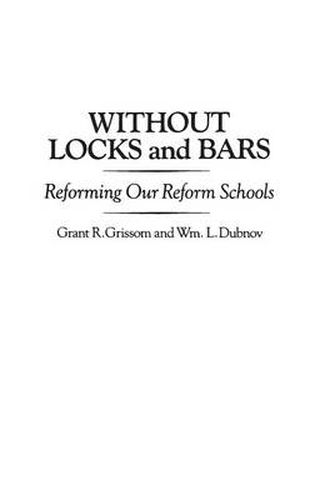Readings Newsletter
Become a Readings Member to make your shopping experience even easier.
Sign in or sign up for free!
You’re not far away from qualifying for FREE standard shipping within Australia
You’ve qualified for FREE standard shipping within Australia
The cart is loading…






A pioneering contribution to the field of juvenile corrections and organizational development, this volume documents the organizational change process which transformed Glen Mills Schools, America’s oldest juvenile correctional institution, from a physically deteriorating, ineffective institution into one of the most successful residential programs for delinquents in the nation. Of particular interest to practitioners, policymakers, researchers and students of juvenile justice, the volume provides both a theoretical model and practical guidelines for the effective reform of juvenile facilities. Documentation of Glen Mills’ success includes the most extensive recidivism study ever conducted on an American correctional institution.
Without Locks and Bars demonstrates that the normative culture residential treatment approach for juvenile offenders can and does work at costs below most traditional programs. The authors describe the theory, beliefs, and values which underlie the formal treatment system at the Glen Mills Schools and the process through which the psychosocial environment (normative culture) is shaped into a potent treatment tool. Especially helpful for practitioners at similar facilities is a detailed discussion of the major steps that must be taken to replicate the Glen Mills model. Based upon the observed effects of the Glen Mills experience, the authors challenge some widely held assumptions in the field. They conclude that most delinquents have far greater potential for positive behavioral change and educational achievement than is generally believed; that most, including serious and repeat offenders, can be treated in an institution where physical security is not necessary and that, if properly managed, large residential facilities may be the placement of choice for most institutionalized delinquent offenders.
$9.00 standard shipping within Australia
FREE standard shipping within Australia for orders over $100.00
Express & International shipping calculated at checkout
A pioneering contribution to the field of juvenile corrections and organizational development, this volume documents the organizational change process which transformed Glen Mills Schools, America’s oldest juvenile correctional institution, from a physically deteriorating, ineffective institution into one of the most successful residential programs for delinquents in the nation. Of particular interest to practitioners, policymakers, researchers and students of juvenile justice, the volume provides both a theoretical model and practical guidelines for the effective reform of juvenile facilities. Documentation of Glen Mills’ success includes the most extensive recidivism study ever conducted on an American correctional institution.
Without Locks and Bars demonstrates that the normative culture residential treatment approach for juvenile offenders can and does work at costs below most traditional programs. The authors describe the theory, beliefs, and values which underlie the formal treatment system at the Glen Mills Schools and the process through which the psychosocial environment (normative culture) is shaped into a potent treatment tool. Especially helpful for practitioners at similar facilities is a detailed discussion of the major steps that must be taken to replicate the Glen Mills model. Based upon the observed effects of the Glen Mills experience, the authors challenge some widely held assumptions in the field. They conclude that most delinquents have far greater potential for positive behavioral change and educational achievement than is generally believed; that most, including serious and repeat offenders, can be treated in an institution where physical security is not necessary and that, if properly managed, large residential facilities may be the placement of choice for most institutionalized delinquent offenders.